Yesterday, I shared a university career center assessment of a cutting-edge, targeted, focused, differentiating career-marketing document I created for a soon-to-graduate student client. You can read more detail about the document here.
To refresh your memory, here is the feedback my client received, (copied exactly as forwarded):
“Your resume is very colorful and creative, however, it looks more like a print ad or bulletin board… Take out the top section and replace it with your objective statement (one line.. To obtain a position as a _______ teacher…) The things you have in this section are more for your cover letter or the interview conversation, not your resume. In addition, remove the quote from the faculty member…All reference information goes on a separate sheet (3-5 list) or in a reference letter, not on your resume itself. Be consistant with the bullets or crayons…I prefer the bullets…it’s looks more mature and professional. You are also missing a Professional Development section (workshops, presentations and conferences attended with dates…see sample)). If you agree with the suggestions and make changes, don’t forget to upload it to … [name withheld career center website.]

Differentiation is key in today's employment environment. Cookie-cutter doesn't cut it. Discover value in what makes you unique; embrace and extol it. (Photo of a poster at husband's work. If you know the source, I'll gladly give attribution.)
Let’s dissect the response:
“Your resume is very colorful and creative, however, it looks more like a print ad or bulletin board…”
The message: It doesn’t look like everyone else’s. It’s different.
My response: This highly-competitive market is about differentiation. Tastefully done, professionally-different (dare I say branded) material attracts attention and gets the resume content read.
“Take out the top section and replace it with your objective statement (one line.. To obtain a position as a _______ teacher…)”
The message: The employer cares about what you seek at this point in the job search.
My response: Nothing is further from the truth. Employers today, overwhelmed with floods of applications, and mountains of non-hiring-related responsibilities, know you want to land a job as an elementary school teacher (or whatever) with a properly done presentation. The format, content, strategy, headline, everything about document itself states the objective clearly without taking up valuable real estate stating the me-centric obvious. Besides, you don’t walk up and tell a complete stranger what you need – “I’m seeking …” – Tell them what value you bring and what you can do to help them, with a strong presentation of skills.
“The things you have in this section are more for your cover letter or the interview conversation, not your resume.”
The message: The cover letter is always read.
My response: First, the information in the section in question was a concise summary of what value our emerging teacher brought to her new school. It respected the reader’s time and told them what they wanted to know immediately, in the top third of the first page – prime resume real estate.
Always include a cover letter (unless told not to), but do not count on it being read in the order you intended, if at all. It is important for the resume to clearly state your value, and do that equally well combined with the cover letter or as a stand-alone document. Understand, the cover letter may not be read; once you hit send, it’s out of your control. A cover letter is not a me-me-me-centric narrative. It is a compelling introduction to go read the resume. Be respectful of the reader’s time. Tell them what they want to know quickly. If you don’t, they’ll quickly move on to someone who does.
“In addition, remove the quote from the faculty member…All reference information goes on a separate sheet (3-5 list) or in a reference letter, not on your resume itself.”
The message: It’s different. Don’t do it.
My response: Testimonials sell. The quote we selected contributed to her value proposition and has the potential to make a reader pause a while longer. It draws attention to the document and increases the chances of being read. If your resume looks like every other word-templated document out there, the chances of being noticed or read diminish greatly.
“Be consistant (sic) with the bullets or crayons…I prefer the bullets…it’s (sic) looks more mature and professional.”
The message: It’s different. Don’t do it.
My response: Would I use crayon bullets on a resume for a CEO? Definitely not. For an elementary school teacher, wanting to work with kindergarteners and elementary-aged students? Absolutely. Differentiating her academic teaching experience from her peripheral summer job experience visually with dividers and changing bullets makes it easier for the reader to determine what they want to know. I used square blocks for the additional experience, differentiating the experience, but further contributing to the elementary-focused theme.
“You are also missing a Professional Development section (workshops, presentations and conferences attended with dates…see sample)).” (sic)
The message: Everyone else has this section. You must have it too.
My response: I was not provided with this information from my client. Depending on the length of the list, I would probably not include it in the resume proper, but make it a supplement. If the job posting requested a specific conference or workshop, I would incorporate that into the body of the document. A resume is about what an employer wants to know; not what you want to tell them. You don’t want their eyes glazing over with a list of conferences and dates before they get to the value you bring because you’re “supposed” to have this section here.
“If you agree with the suggestions and make changes, don’t forget to upload it to the [name withheld career center website.]”
The message: If you’ll adopt a cookie-cutter, 1990 approach, losing the design, pop, and value message, and are willing to look like everyone else, you can upload to … [name withheld career center website.]
My response: Conform or you can’t upload? That is the most terrifying piece of all. I have no words.
An alternate approach:
In fairness, career strategy is what I do for a living. I immerse myself in hiring, recruiting, sales, marketing, writing, and presentation information every day. I interact with career professionals through various social media platforms and professional affiliations. This client and I spent several hours together on the phone. I spent several more crafting her resume.
I do not have to offer advice to thousands of students and deal with the daily duties and stresses of career center activities. I understand the need to provide quick and basic information to large volumes of students.
What troubles me, is rather than say, “I recognize you’ve invested in advancing your career and engaged a professional. Listen to the specialized, customized-for-you-and-your-search information provided. My information is basic for the masses. I’m here to support you in other ways. You’ve got the resume covered”
Instead, this center representative rolled out a cookie-cutter, look-like-everyone-else method and “suggested” changing her current presentation so my client could take advantage of the school job search resources.
Launching a career, after investing thousands of hours and dollars in pursuit of your profession with dated, ineffective career documents and look-alike advice can mean the difference between career success and failure; gainful employment and yet another month of searching. An inability to articulate a unique value proposition in relation to employer needs can cost thousands in starting salary and ongoing earnings too.
Vet your job search guidance carefully. One big clue. If “objective”, “seeking …”, and “this is the only way to do it” advice are bantered about, it’s best to move on. There’s nothing to learn there.
UPDATE:
On July 7th, 2012, my client tweeted this to me (via Twitter):
“Thank you for your wonderful resume help! I just accepted a position!”
Dawn – 1 Dinosaurs – 0

 Link to this page
Link to this page





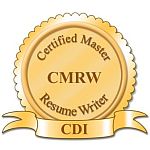
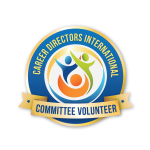

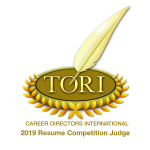
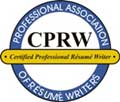
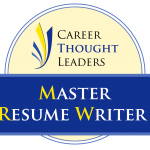


[…] How current is that job search advice? | Responding to the dinosaurs. » […]
Hi Dawn:
Great article! There are, of course, many valid ideas out there on resumes – and that’s as it should be. But there are also, unfortunately, people giving advice who simple aren’t up on what’s been happening in the hiring and resumes industries – and are often several years (at least) behind the times.
You’ve hit some great points here – and it’s important for job seekers to know the facts.
J.M. Auron
Hi J.M. –
Excellent point regarding “many valid ideas out there on resumes”. And you’re right, “that’s as it should be”. Advertising takes many forms, depending on audience and target. And advertising styles and approaches change regularly in response to changing markets, consumer preferences, and product availability. Gee … sounds a bit like the undulation of an employment market doesn’t it?
Bottom line. Things change. Rapidly. Successful job seekers keep up or partner with someone who does.
Thank you so much for stopping by and adding to the conversation.
Hi Dawn,
I like the way you’ve broken this down, interpreting the unspoken comments, then explaining how and why things could be done differently.
Well done!
Marianna –
Thanks for stopping by. The message that career center employee eschewed terrifies me. So wrong, on so many levels. It truly saddens me grads are launching brand new careers from behind such a HUGE roadblock.
Wow — that just boggles the mind that a university career center would advocate for such an outdated approach! So sad that they are doing their students and alumni such a disservice by not keeping current with trends and learning what works in the real world.
My favorite quote from this post: “A resume is about what an employer wants to know; not what you want to tell them.” Yes, yes, yes! You tell ’em, Dawn!
Hi Melissa –
It does boggle the mind this type of information is purported as “sound guidance” by a “respected authority.” It also saddens me we seem to be more interested in “stamping out clones” than teaching people how to convey value in specific employment situations. We’ve got a lot of educating to do!
Thanks for the compliment and adding to the conversation.
That’s the real deal.
Last year, I helped a college student to shape his resume. He was competing for a job along with other college students and people with a similar skill set and background. After showing his school adviser the resume I did for him which didn’t have the old school objective with his unfinished education perched at the top, his adviser told him he’d never get hired with a resume like that.
I had two questions for the guy – how old is your adviser? How long has he been in his position. The answers, “as dirt” and “forever.”
No offense.
None taken. 🙂
I usually ask, when’s the last time this person searched for a job? What’s the copyright date in the last career book they read? Or what’s the URL of the last career-related blog post they read?
Things change. It’s either keep up, or partner with someone who does. And that’s not always the “free” resource either. (Free can sometimes cost the most!)
Thanks for stopping by and sharing your story, Sorilbran.
I applaud you on this one. There will always be people who will stick to the old formal style. But in truth, the one that’s different will always stand-out. Its also a show your character – to be unique and original.